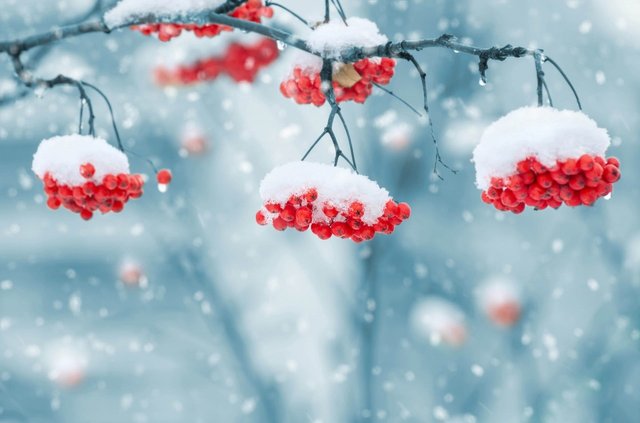Subarctic permaculture - selection of fruits and vegetables, other sources of food (2)
 source CC-BY
source CC-BY
As you may already know from the first post I wrote about subarctic permaculture, I live in quite a harsh environment. My location falls within climate zone 5a on the hardiness zone scale, or Dfc (subarctic) in the Köppen climate classification. For those of you who are wondering what the hell does it mean - I share the same climate as places like Alaska, Yukon in Canada, or Yakutsk deep in Siberia.
At first glance, it might seem impossible to grow anything in this climate. You might think I’d be better learning how to hunt deer, or simply start eating snow instead, but there’s no way I’d get any vegetables from this soil. Well, as is often the case, first impressions can be wrong.

After a bit of research, I’ve managed to put together quite an ambitious plan that I’ll be working on step by step over the next few years. Ok, most likely it will take me whole life, but who cares? It's more about getting better and learning new things year after year than reaching some imaginary perfection :) The climate is not so bad. I believe that with some effort, I could even achieve 90% of self-sustainability at some point—though the variety of products will certainly be more limited compared to Argentina, where I used to live. The amount of work will also differ significantly. The growing season here lasts only four months, so producing enough food for the entire year would require mastering preservation techniques like canning, jarring, drying, and deep freezing.

Let’s start with the vegetables that can be grown here. The list is surprisingly long. I’ve discovered that many types of veggies are worth trying in my future garden:
| No | Plant | No | Plant | No | Plant |
|---|---|---|---|---|---|
| 1 | Asparagus | 23 | Broccoli | 45 | Yam |
| 2 | Beetroot | 24 | Cauliflower | 46 | Mizuna |
| 3 | Carrot | 25 | Potatoes | 47 | Luffa |
| 4 | Chicory | 26 | Brussel Sprout | 48 | Collards |
| 5 | Cabbage | 27 | Radish and white radish | 49 | winged pea |
| 6 | Kale | 28 | Rhubarb | 50 | macha |
| 7 | Lettuce | 29 | Peas | 51 | Claytonia greens |
| 8 | Spinach | 30 | Pole bean | 52 | Cress |
| 9 | Eggplant | 31 | corn | 53 | Fava bean |
| 10 | Leek | 32 | Okra | 54 | Dwarf bean |
| 11 | Chive | 33 | Celery | 55 | Cardoon |
| 12 | Onion | 34 | Pumpkin | ||
| 13 | Squash | 35 | garlic | ||
| 14 | Chilli | 36 | Peppers | ||
| 15 | Parsnip | 37 | Fava bean | ||
| 16 | Endive | 38 | Black eyed peas | ||
| 17 | Turnip | 39 | Eggplant | ||
| 18 | Mustard | 40 | Horseradish | ||
| 19 | Artichokes | 41 | Kohlrabi | ||
| 20 | Rutabaga | 42 | Zucchini | ||
| 21 | Swiss chard | 43 | Rucula | ||
| 22 | cucumber | 44 | Tomato |
This is a very ambitious plan. Some vegetables on the list, like carrots (which are present in almost every garden and are clearly adapted to this climate), radishes, and spinach (both of which grow very quickly), shouldn’t be very challenging. Others, however, will only grow—most likely much smaller than in other regions—if I don’t make any mistakes. Selecting specific varieties will be crucial (not every tomato will survive here, for example), and starting seeds indoors or in a greenhouse will be necessary for plants like eggplants and luffa. But hey, people say YOLO, so why not try? Why not surprise the world with something as unexpected as chili peppers from the land of ice and snow? I honestly believe there’s a chance to succeed. Well, I have doubts about eggplant, but @diegocelma loves it so much, that I have to at least try to grow it ;)

Over time, I’d like to expand beyond vegetables and experiment with fruits. I won’t be trying to grow bananas or coconuts, but I think berries like strawberries, raspberries, blueberries, mulberries, lingonberries, and gooseberries could work. I might even try with the apple trees, though locals say it’s too cold for apples here, so that could be risky. I also know that many people forage for wild fruits in the forest during the summer. Learning to do this will be just as important to me as growing my own plants.
I’d also love to incorporate more local resources into my diet. While I doubt I’ll ever hunt deer or moose like many of my neighbors do (I’m too much of a pacifist for that), I could learn to fish - I have a river right in front of my house. Learning which mushrooms won't kill me can be useful too.
To diversify my food sources even more, I could grow herbs at home—basil, celeriac, coriander, dill, fennel, thyme, tarragon, lemon balm, parsley, rosemary, and more. I could also grow sprouts and maybe even cultivate champignons. In the long term, raising chickens or cows might also be possible. Sure, this is challenging—like everything in a subpolar climate. Chickens lay fewer eggs during the winter when there is not enough sunlight (which is half the year here), and cows need to be kept in barns when it’s too cold. Still, I might experiment with producing my own eggs and milk, just to prove myself that I can do it.
Follow and watch me succeeding (or failing, who cares? ;)).


We support quality posts and good comments Published in any community and any tag.
Curated by : chant